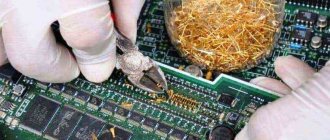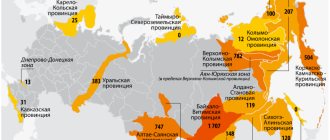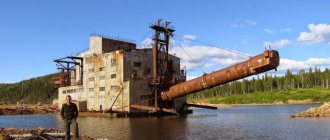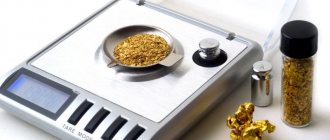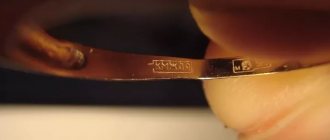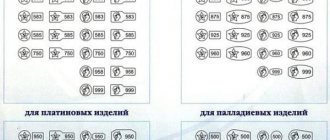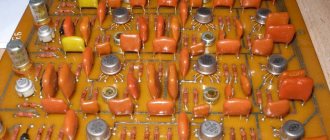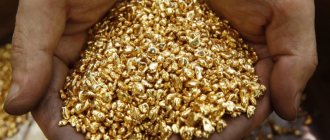Gold mining is currently a good source of income for some people. Therefore, businessmen and entrepreneurs are considering illegal mining using homemade structures. One of them is a dredge for gold mining. The device is used both in industry, where it is large in size and processes a lot of land, and in small-scale mining by prospectors. In the latter case, the device is called a minidrag.
Operating principle of an industrial dredge
People of different professions are engaged in exploration and mining of precious metals. The more people involved in the activity, the faster the search will be successful. Minidrag will not help during preparation for gold mining, since it cannot recognize the presence of metal particles in the water. But if there is gold, it can be safely extracted using this device.
What is dredge
A dredge is a mechanism for separating gold from the soil. Nowadays, it occupies a leading position among both individual and industrial gold miners as a means for washing precious metal. The reason for this lies in the simplicity of the design and at the same time the high performance of the dredge.
Features of the dredge
Not every deposit is suitable for gold dredging. Gold miners should take into account the following features:
- Healing gold is only possible in bodies of water: rivers, seas, etc. The dredge device is to blame (which we will look at in more detail below). The fact is that in water, rock particles weigh several times lower than in air. Accordingly, much less energy is required to lift them from the depths of rivers. When mining in open areas, it is necessary to significantly increase the power of the pump and electric motor, which is not practical due to the significant increase in the size and weight of the dredge.
- The need to conduct a study by geological services of the area for the presence of gold ore. The dredge itself does not have sensors and mechanisms for searching for gold. Its function is only to separate the metal from the ground. It is worth noting that today a deposit is considered profitable from a financial point of view if there are 3 grams of gold per 1 ton of rock.
- Not all types of soil are suitable for gold dredging. This refers more to the size of rock particles, rather than their chemical composition. The reason for this is the limitation in the size of the suction hoses through which soil is drawn from the bottom of reservoirs.
Gold mining by hand and spot method
Its essence consists of manually sifting and washing river sand from gold-bearing rivers to detect inclusions of precious metal. Can be roughly divided into two types:
- Manual washing. A sieve, wooden tray or burlap is used for sifting. Nuggets that are larger in size than sand remain in the container and are placed separately. These procedures do not require expensive equipment or skills, so anyone can handle them with the proper skill and desire. However, this is quite painstaking and physically difficult work that takes a lot of time. In addition, prolonged exposure to water negatively affects the health of the miner. This method of extracting placer gold is considered obsolete.
- Mechanized mines. The use of specialized equipment that allows you to lift sand from great depths and deliver it to the surface. Allows you to significantly reduce delivery and processing time than using only manual labor. But even with the availability of technology, the schlich extraction method still remains one of the most difficult.
Dredge device
As mentioned earlier, the design of the dredge is not complicated.
Minimum electrics, maximum parts from a regular technical store. So, the following components of the dredge are distinguished:
- Suction tip. In appearance it looks like a tapering cone. Made from thin sheet steel no more than 2 mm thick. The edges of the tip are fastened by manual arc welding. Different diameters of the cone bases are necessary to increase the suction area on the one hand, and on the other to more quickly transport soil to the surface of the water.
- Supply hose. As a rule, it is represented by a high-pressure hose with a diameter of at least 12 centimeters. This size is due to the weight limitation of the dredge. To increase the rigidity and strength of the hose, a metal frame is embedded into its base.
- Pressure hose. The same sleeve, but with a diameter of 50 millimeters. The main purpose of this unit is to supply clean water for washing and transporting gold with soil.
- Pump. Provides direct pressure for supplying rinsing water. Not every pump is suitable for this. The most important parameter here is maintaining operability when large soil particles enter the working cavity. Various types of diaphragm, vane and gear pumps have proven themselves to be the best.
- Electric motor. Necessary for transmitting torque to the pump. Typically, asynchronous three-phase motors are used, as they are the most convenient to operate. Their power depends on the performance of the installation. For a small-sized dredge, 2 hp is enough.
- Flushing sluice. It is a curved container. The gateway serves as a place for screening gold particles from rocks. It is made from thin-sheet materials: steel and aluminum, in the case of a lightweight design.
- Gutter A vessel where the deposited gold is directly collected.
- Source of electricity. Required to supply electric current to the motor. This can be either a battery or a gasoline generator. In the case of large industrial scale mining, a power line is connected to the dredge.
- Floating platform. Serves as a frame for installing all of the above equipment. Another function of the platform is to maintain the buoyancy of the dredge on the surface of the reservoir. Stability afloat is maintained by large tanks filled with air. The platform is made from structural materials. Most often this is aluminum.
Leaching
Leaching is most notable because it can produce metal even from rock that has a low gold content or has already been processed. Its operating principle is as follows:
- The mined gold rock is crushed into small particles, no larger than a grain of sand.
- A cyanide solution is added to the resulting mixture and stirred. From the resulting mixture, cyanide liberates gold from the rock and impurities.
- The liquid is pumped out, and the solid particles are sent to a special tank, where the remaining cyanide solution separates the remaining gold. Heavy particles settle.
- Zinc is added to the solution, starting the process of “cyanide leaching,” which allows you to isolate up to 98% of the gold. Quite a costly, but also pays off method.
However, the process does not end there yet. For subsequent purification, the gold is sent to the furnace, after being mixed with a special chemical mixture - flux. Heats up to a temperature of 1500 C°. The result is a noble metal with 80% purification from impurities.
Principle of operation
Gold ore particles are purified from rock in several stages:
- The electric motor turns on and the pump directs water into the pressure hose, thereby discharging the space between the river water and the suction tip.
- Due to the vacuum formed, the soil is drawn in by the suction nozzle and moves along the supply hose to the flushing sluice.
- Once there, the soil and water pass through a certain system of drops. The goal here is to separate the denser gold from the lighter rock particles.
- Then, after a certain time, the gold settles in the gutter, and the remaining soil is removed into the river along with the flushing water.
Before the actual start of the washing process, the dredge is adjusted to ensure the accuracy of catching the precious metal. This is done by adjusting the overflow differential, flow and pressure of the pump.
To ensure greater reliability of the correct operation of the dredge, a preliminary check is carried out, which consists of passing pieces of lead marked with paint through it. If, after passing through the sluice gate, painted metal is observed in the chute, then the dredge is working properly. If not, then it is sent for revision.
Almagalmirovaniye
The basis of this method is mercury, since it is able to attract gold and envelop it. The extraction process itself includes the following steps:
- Mercury and rock are placed in a special container, after which it is shaken.
- Mercury envelops the gold and extracts it from the ore, settling at the bottom of the container. All excess remains on top and is then removed.
- The container is heated and the noble metal is separated from the mercury.
This method of gold mining was very common in the past and the reason for this is its low cost and efficiency. Nowadays it is practically not used due to the negative effects of mercury on the human body.
Classification of dredges
There are many types of gold dredges. They are divided according to the following parameters:
1. Power. This refers to the depth from which the dredge can remove soil. Typically, this value ranges from 5-50 meters.
2. Portability. There are stationary and floating dredges.
2.1. Stationary ones are powerful industrial dredges weighing up to 1,500 kg. In terms of their dimensions, they are comparable to 4-story modern houses. They have a large number of electronics and have greater ability to regulate the gold mining process. The management staff of such dredges consists of at least 10 people.
2.2. Floating – more mobile dredge models. They are significantly less in weight (40-150 kg) and power. Even 1 person can handle this dredge.
3. Screening performance. Depending on the type of pump, the diameter of the hoses and the type of flushing sluice, it can vary from 100 to 1000 kg of soil per hour.
What is it and what is its value for a person?
Gold is a noble metal with high density, thermal conductivity and low resistance to electricity. In reflected light its color is yellow, and in transmitted light it acquires an additional bluish-greenish tint.
In terms of its hardness, this metal is not much superior to a human nail and is quite inert. It is not destroyed by exposure to acids and alkalis, which is why it is classified as noble. Humanity began to develop its production back in the 5th century BC. during the Neolithic period.
Today, according to statistics, only 10% of the total volume of gold mined is used in industry. The rest of it is allocated for jewelry and is stored in the form of gold and foreign exchange reserves. Each state has its reserves, which are assessed according to the generally accepted “gold standard”. It determines its purity, density and other characteristics.
Other mining methods
Extraction of gold from rocks is done not only by dredging. It is also worth noting the following methods:
- Manual. A gold miner extracts gold using a regular tray, washing the soil in it with water. This method was simple, but had very low productivity.
- Ore. Extraction is carried out in onshore deposits using special high-tech equipment: excavators, drills, etc.
- Hydraulic. The dredge mining method we are considering also applies to this. Gold is obtained by eroding rocks.
Rate this article:
Rating: 0/5 — 0 votes
How is it formed
A recently proposed theory suggests that this metal was formed due to the destruction of neutron stars containing it in the form of dust. But because it happened billions of years ago, when the Earth was still in a molten state, almost all the gold accumulated in the core of our planet.
According to another assumption, the noble metal, which is mined today in the earth's crust and mantle, came to Earth as a result of the late heavy bombardment, and gold-bearing ores and rocks were formed around the Precambrian period.
At the same time, microscopic particles of this metal are distributed almost everywhere: in the ground, water, plants and even our body. Mining is carried out at the following gold deposits:
- primary or primary deposits that are formed as a result of the eruption of magma and its subsequent solidification;
- secondary or alluvial, resulting from the release of gold from ore under the influence of natural factors (river flows, mountain falls, the formation of ravines) or disasters (floods, mudflows, heavy rainfalls).
It accumulates in large quantities under exogenous conditions. To date, about fifteen gold-containing minerals are known. It is found both in native form and in an alloy with silver (electrum).
Gold production volumes in Russia
For a long time, Russian deposits remained hidden. The first gold mine was discovered by the peasant Erofei Markov in 1745 and was named Berezovsky.
In the Russian Federation, from 237 to 249 tons of precious metal are mined annually, which is approximately 8% of the world volume, and in terms of reserves it is second only to South Africa, with over 11%. Over the past ten years, the amount of metal mined has increased significantly. They even managed to overtake the USA, moving from third to fourth place. At the same time, industrial technology for gold mining in Russia began to be used only in 1945. Today, gold mining is most active in the following areas:
- Irkutsk region;
- Magadan;
- Chukotka;
- Amur region;
- Krasnoyarsk;
- Khabarovsk.
The Urals and Eastern Siberia are considered the most promising areas. About 16 companies are engaged in gold mining and replenish state reserves by tens of kilograms annually.
Flotation
The flotation method is based on the unusual property of some rocks not to get wet, but to be enveloped in liquid particles and float on the surface like air bubbles. To do this, the rock is crushed and then filled with water or oil. After this, it is thoroughly mixed. In industrial mining, air, water or chemical elements are usually passed through this mixture.
The flotation machine is a series of chambers arranged in order with pulp discharge mechanisms. This is quite expensive, but more than pays for itself equipment, used by many leading countries in the gold mining industry.
